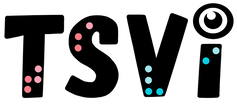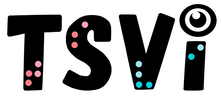- Home
-
Learn
- History of VI >
- Legislation & Laws >
- Vision Professionals >
-
VI Program Resources
>
- Program Printables
- Itinerant Teaching Tips
- Year at a Glance
- VI Program Handbook
- Caseload Analysis
- Organization & Time Management
- Professional Development
- Teacher Standards
- Professional Ethics
- Awards & Recognition
- APH Scholar Program
- Professional Organizations
- Certification Organizations
- Dealing with Challenges
- Professional Publications >
- Relatable Books for All Ages >
- Family Resources >
- Plan
- Basics
-
Teach
- Teaching Strategies >
-
Compensatory Skills Instruction
>
-
Social Skills
>
-
Self Determination
>
- Body Image & Acceptance
- Making Personal Goals
- My Vision Presentation
- My Self-Description
- Create a Personal Data Sheet
- Disclosure Decision
- Disability Statement
- Requesting Help
- Fighting Fears
- My Circle of Support
- Personal Responsibility
- Advocate for Safe Enviroments
- Having Picture Taken
- Coping with Change
- Aging Eyes
- Physical Characteristics
- Political Activism
- Laws Regarding Persons with Disabilities
-
Sensory Efficiency
>
-
Independent Living
>
- Orientation & Mobility Instruction >
- Recreation & Leisure >
-
Career & Vocation
>
-
Grow
- Complete Set Bonus >
-
Recorded Presentations
>
- Webinar: Tips for Being a "Physically Fit" TVI
- Webinar: The Art of Teaching the ECC
- Webinar: Virtual & F2F Strategies
- Webinar: Foundations of Teaching the ECC in the Age of Virtual Instruction
- Webinar: Itinerant Teaching Strategies
- Webinar: Using Themes to Teach the ECC
- Webinar: Conducting a FVLMA
- Webinar: Selecting the Right AT
- Webinar: Developing SMARTER Goals
- Webinar: Determining Service Intensity Using the VISSIT
- Webinar: Activities to Teach the ECC
- Webinar: Accessible Content for BLVI
- Webinar: Accommodations for VI
- Webinar: MIMO Strategies & Activities
- Webinar: SIDPID Strategies & Activities
- Webinar: Standard Course of Study Strategies & Activities
- Webinar: Job Tasks for Job, Career & Life
- Shop
- Jobs
Structure & Function of the EyeBy: Carmen Willings
teachingvisuallyimpaired.com Updated June 18, 2022 To better understand a student’s vision, it is important to know how each part of the eye contributes to a person's ability to see. Each area of the eye has an important role and must function properly in order for the eye to function properly. The following is a quick lesson in the structure and functions of the eye. There are three underlying reasons for, a visual impairment. The first, there may be damage or a result of an injury to one or more parts of the eye essential to vision. This damage may interfere with the way the eye receives or processes visual information. Second, the eyeball may be proportioned incorrectly (have different dimensions than usual), making it harder to focus on objects or may not have developed correctly. And finally, the part of the brain that processes visual information may not work properly. The eye may be perfectly normal, but the brain is not able to analyze and interpret visual information, which prevents the individual from being able to see, or see normally.
Parts of the eye...As part of the coursework for becoming certified as a Teacher of Students with Visual Impairments, it is necessary to take a class on the structure and function of the eye. Understanding the significance of each area of the eye can help a TVI understand the possible effects of various visual diagnosis.
1. Tear LayerThe Tear Layer (The Lacrimal System) is the first layer of the eye that light strikes. It is clear, moist, and salty. Its purpose is to keep the eye smooth and moist.
2. CorneaThe Cornea is the second structure that light strikes. It is the clear, transparent front part of the eye that covers the iris, pupil and anterior chamber and provides most of an eye’s optical power (if too flat = hyperopia/farsightedness; if too steep = myopia/nearsightedness). It needs to be smooth, round, clear, and tough. It is like a protective window. The function of the cornea is to let light rays enter the eye and converge the light rays.
3. Anterior ChamberThe Anterior Chamber is filled with Aqueous Humor. Aqueous Humour is a clear, watery fluid that fills the space between the back surface of the cornea and the front surface of the vitreous, bathing the lens (The anterior and posterior chambers. Both are located in the front part of the eye, in front of the lens). The eye receives oxygen through the aqueous. Its function is to nourish the cornea, iris, and lens by carrying nutrients, it removes waste products excreted from the lens, and maintain intraocular pressure and thus maintains the shape of the eye. This gives the eye its shape. It must be clear to function properly.
4. IrisThe iris is the pigmented tissue lying behind the cornea that gives color to the eye and controls the amount of light entering the eye by varying the size of the papillary opening. It functions like a camera. The color of the iris affects how much light gets in. The iris controls light constantly, adapts to lighting changes, and is responsible for near point reading (to see close, pupils must constrict)
5. LensThe lens is the natural lens of the eye (chrystaline lens). Transparent, biconvex intraocular tissue that helps bring rays of light to focus on the retina (It bends light, but not as much as the cornea). Suspended by fine ligaments (zonules) attached between ciliary processes. It has to be clear, has to have a power of about +16, and has to be pliable so it can control refraction (This becomes less pliable as you age leading to presbiopia).
6. Vitreous Humour (Chamber)Vitreous Humour (Chamber) is the transparent, colorless gelatinous mass that fills rear two-thirds of the eyeball, between the lens and the retina. It has to be clear so light can pass through it and it has to be there or eye would collapse.
7. RetinaThe retina is the light sensitive nerve tissue in the eye that converts images from the eye’s optical system into electrical impulses that are sent along the optic nerve to the brain, to interpret as vision. Forms a thin membranous lining of the rear two-thirds of the globe; consists of layers that include two types of cells: rods and cones. There is no retina over the optic nerve which causes a blind spot (This is the sightless area within the visual field of a normal eye. It is caused by absence of light sensitive photoreceptors where the optic nerve enters the eye.)
8. ChoroidThe vascular (major blood vessel), central layer of the eye lying between the retina and sclera. Its function is to provide nourishment to the outer layers of the retina through blood vessels. It is part of the uveal tract.
9. ScleraThe sclera is the opaque, fibrous, tough, protective outer layer of the eye (“white of the eye”) that is directly continuous with the cornea in front and with the sheath covering the optic nerve behind. The sclera provides protection and form.
10. Optic NerveThe Optic Nerve is the largest sensory nerve of the eye. It carries impulses for sight from the retina to the brain. Composed of retinal nerve fivers that exit the eyeball through the optic disc, traverse the orbit, pass through the optic foramen into the cranial cavity, where they meet fibers from the other optic nerve at the optic chiasm.
11. Extraocular MusclesThere are six extraocular muscles in each eye:
Additional Resources...Exploratorium
Dissecting a cow eye was the ABSOLUTE worst part of my VI coursework in learning about the structure & function of the eye...it didn't help that I was 6 months pregnant at the time! I will say it is fascinating, however, to examine the eye. The Exploratorium site demonstrates the process of a proper cow's eye dissection (Don't watch this if you're eating!!! You've been warned!). Having an eye model can help the Teacher of Students with Visual Impairments identify the area(s) of the eye affected by certain visual conditions to help team members understand the area of the eye affected.
|
History of Visual Impairments
Professional Practice
Vision Professionals
Professionalism
Teacher Resources
Professional Publications
VI Book Resources
Family Resources
VI Referrals
Medical vision exams
visual diagnosis
fvlma
|
|
Teaching Students with Visual Impairments LLC
All Rights Reserved |
- Home
-
Learn
- History of VI >
- Legislation & Laws >
- Vision Professionals >
-
VI Program Resources
>
- Program Printables
- Itinerant Teaching Tips
- Year at a Glance
- VI Program Handbook
- Caseload Analysis
- Organization & Time Management
- Professional Development
- Teacher Standards
- Professional Ethics
- Awards & Recognition
- APH Scholar Program
- Professional Organizations
- Certification Organizations
- Dealing with Challenges
- Professional Publications >
- Relatable Books for All Ages >
- Family Resources >
- Plan
- Basics
-
Teach
- Teaching Strategies >
-
Compensatory Skills Instruction
>
-
Social Skills
>
-
Self Determination
>
- Body Image & Acceptance
- Making Personal Goals
- My Vision Presentation
- My Self-Description
- Create a Personal Data Sheet
- Disclosure Decision
- Disability Statement
- Requesting Help
- Fighting Fears
- My Circle of Support
- Personal Responsibility
- Advocate for Safe Enviroments
- Having Picture Taken
- Coping with Change
- Aging Eyes
- Physical Characteristics
- Political Activism
- Laws Regarding Persons with Disabilities
-
Sensory Efficiency
>
-
Independent Living
>
- Orientation & Mobility Instruction >
- Recreation & Leisure >
-
Career & Vocation
>
-
Grow
- Complete Set Bonus >
-
Recorded Presentations
>
- Webinar: Tips for Being a "Physically Fit" TVI
- Webinar: The Art of Teaching the ECC
- Webinar: Virtual & F2F Strategies
- Webinar: Foundations of Teaching the ECC in the Age of Virtual Instruction
- Webinar: Itinerant Teaching Strategies
- Webinar: Using Themes to Teach the ECC
- Webinar: Conducting a FVLMA
- Webinar: Selecting the Right AT
- Webinar: Developing SMARTER Goals
- Webinar: Determining Service Intensity Using the VISSIT
- Webinar: Activities to Teach the ECC
- Webinar: Accessible Content for BLVI
- Webinar: Accommodations for VI
- Webinar: MIMO Strategies & Activities
- Webinar: SIDPID Strategies & Activities
- Webinar: Standard Course of Study Strategies & Activities
- Webinar: Job Tasks for Job, Career & Life
- Shop
- Jobs

